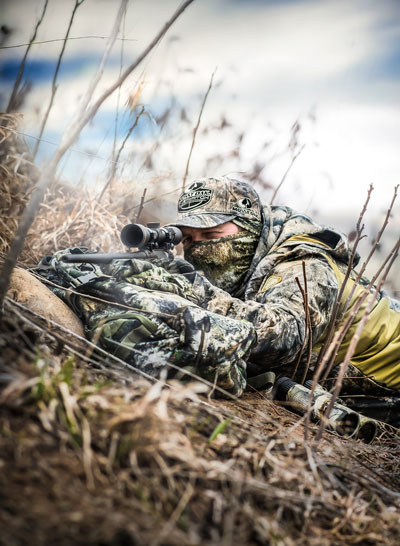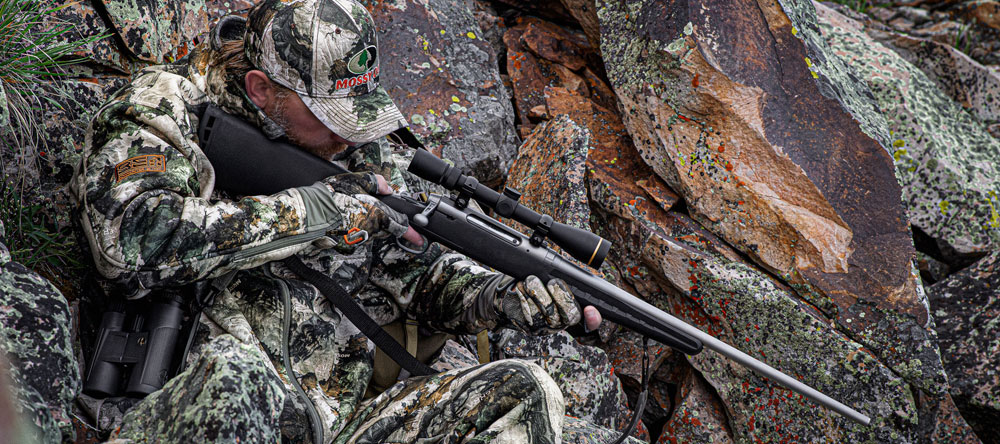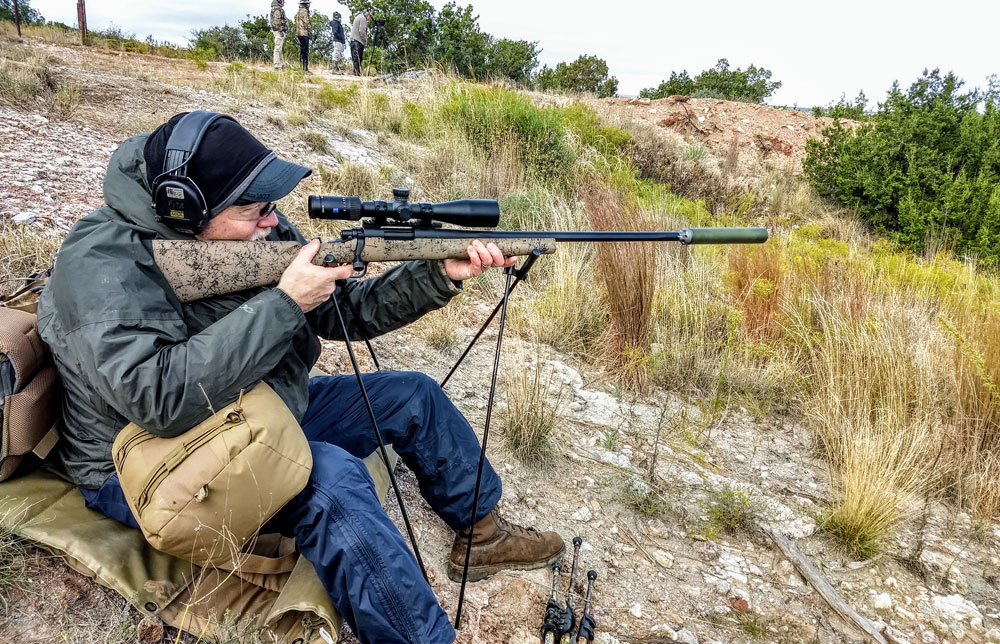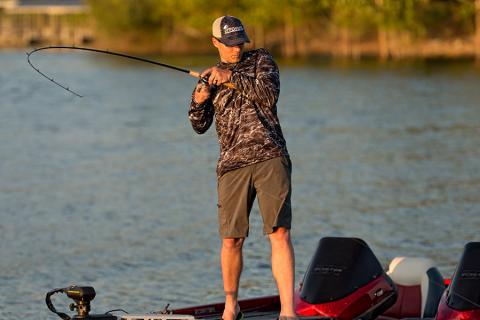While there are many gadgets on the market that promise to make your aim more precise, nothing beats mastering the four fundamental shooting positions.
The four shooting positions, in order from least stable to most, are standing (also called offhand), kneeling, sitting, and prone. The closer to the ground you get, the more stable your shot will be. There are two categories for each of these positions – supported or unsupported.
There is something to be said about learning how to apply these positions to various hunting methods. You're never going to get a shot that's as set-up as you might find at a practice range, but mastering these four positions can help you hone your skills with the rifle.
Read on for more details about how to make each of these positions work in the field.
1. Prone
 The critical element to a prone, unsupported position is bone contact. You don't want to use muscle to brace your gun. If you're a right-handed shooter, your position and shooting stance should be built around your left elbow.
The critical element to a prone, unsupported position is bone contact. You don't want to use muscle to brace your gun. If you're a right-handed shooter, your position and shooting stance should be built around your left elbow.
Traditional prone stances dictate that your body be positioned at an angle to the target, whereas more modern theories put the body straight back. Whichever way you're most comfortable is the best route to go.
Get down on your stomach, plant the left elbow, put your gunstock in your cheek well, and plant your other elbow in the dirt. This shooting position builds on your left elbow's contact with the ground. Relax the rest of your body and put the whole weight of the gun on that elbow.
For a supported field shot, you won't be carrying around a rest or a sandbag to prop up your rifle, but you probably have a backpack or jacket. Use these on top of a rock or log to brace your rifle. You never want to put your gun directly on a solid object. Even if you don't have a jacket or backpack, a folded hat or your hand will do the trick.
Build your position in the same way you would an unsupported prone shot, but prop your rifle on the support. It's wise to use your left elbow (or the elbow of your non-dominant hand) as a fixed brace in this position.
Prone positions are the most stable long-range shots you can make in the field. However, they're not used often because of dense vegetation and visual obstacles that make the stance unreliable.
2. Sitting
The most stable of all the seated positions is to sit cross-legged with your elbows planted on your knees.
For an unsupported sitting shot, you still want to concentrate on building bone-to-bone contact. Sitting at a 45-degree angle from your target, place your non-dominant elbow on the same side knee, wrapping your arm around the sling to hold the rifle. Sock the stock into your shoulder and aim, relaxing as much of your body as you can.
There are many tools you can use to help with a seated supported shot. Tripods and bipods are telescopic, fast to set up and fit in your backpack. The key to using one of these supports is to ensure it's at the ideal angle, so you're not pulling your rifle up or down to compensate.
Use the same method to aim and shoot with your support as you would from an unsupported seated shot. You can also use the gun sling to create stable tension between your body and the rifle to increase precision.

3. Kneeling
To achieve the proper shooting form for an unsupported kneeling position, plant your right knee and tuck your right foot under your hip. To aim accurately, your left knee should be as high up as possible for straight posture and regulated breathing. Place your left elbow on that knee and build your position from the bone-on-bone connection of your elbow and knee.
A supported kneeling position uses a tool like a bipod or a tripod. Make sure that the stance of your tripod is perfect. It will make a lot of difference for your precision.
4. Standing
An unsupported standing stance is also called offhand. It is one of the most challenging positions from which to shoot. Experts don't recommend this stance for a stable long-range shot, but if it's the only viable shot you have, take it. The key to an unsupported offhand shot is that you can't rush if you want to hit your target.
Stock fit is critical in this shooting stance more than in any other. Make sure your cheek is firmly glued to the stock for a precise shot.
Stand 90 degrees to your target with your feet shoulder-width apart and relax the rest of your body. Wrap the sling around your arm for more support or rest your left elbow on your hip. This will give you more stability and keep your upper body extended and open. You don’t want to be hunched over your rifle.
It is almost impossible to hold a target in your sights in this position. The barrel will move, and there's not much you can do about it. The best you can do is get attuned to the barrel's rhythm and squeeze the trigger when it's on the target.
A standing supported position is excellent if you have a tool that extends high enough. In the field, you may not be able to shoot from a prone or kneeling position due to deadfall, brush, or other obstacles. With a tripod, you can shoot over these to hit your target.
For this stance, make sure your tripod is precisely at shoulder-level. You don't want to use muscles to get the rifle into position because the support itself should do that. The more natural the position, the better you will shoot.

The Takeaway
You can practice these four shooting positions on training grounds, battlefields, and competitive target ranges. You can also use them to improve your accuracy in the field. Build your stances around the solid contact of bone-to-ground or bone-to-bone connection, and let the angles and equipment work for you.



























